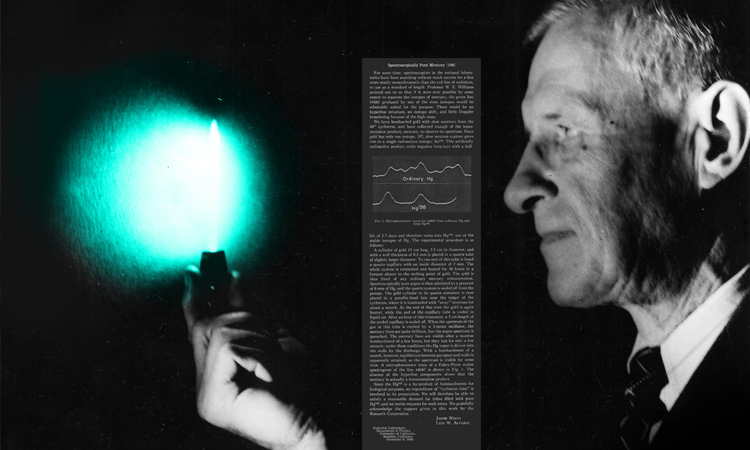Feature
Mercury-198 and the Standard Meter
From the late 19th century onward, numerous candidates were put forward as definitions of a “standard meter,” until the meter itself was dropped as a primary standard in 1983. One of those candidates was the green line of mercury-198—and therein lies an interesting optical tale.
 Meggers holding a mercury-vapor (Hg) lamp. (Inset) Recorded spectrum of 198Hg by Alvarez and Wiens, published in 1940 Physical Review. [NBS Archives, courtesy AIP Emilio Segrè Visual Archives, W.F. Meggers Collection / Inset from J. Wiens and L.W. Alvarez, Phys. Review 58(11), 1005, 1940. ©1940 by the American Physical Society]
Meggers holding a mercury-vapor (Hg) lamp. (Inset) Recorded spectrum of 198Hg by Alvarez and Wiens, published in 1940 Physical Review. [NBS Archives, courtesy AIP Emilio Segrè Visual Archives, W.F. Meggers Collection / Inset from J. Wiens and L.W. Alvarez, Phys. Review 58(11), 1005, 1940. ©1940 by the American Physical Society]
Before the 18th century, units measuring distances and other lengths varied from place to place—and the measured size of an object could vary depending on where the measurement took place. An English “foot,” for example, was the average length of the feet of sixteen random men coming out of a church. That changed beginning in France in the 1790s, with the development of the Système international d’unités (SI) or metric system, eventually adopted by most countries in the world and, in particular, by the scientific community.
…Log in or become a member to view the full text of this article.
This article may be available for purchase via the search at Optica Publishing Group.
Optica Members get the full text of Optics & Photonics News, plus a variety of other member benefits.
